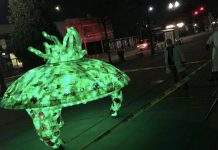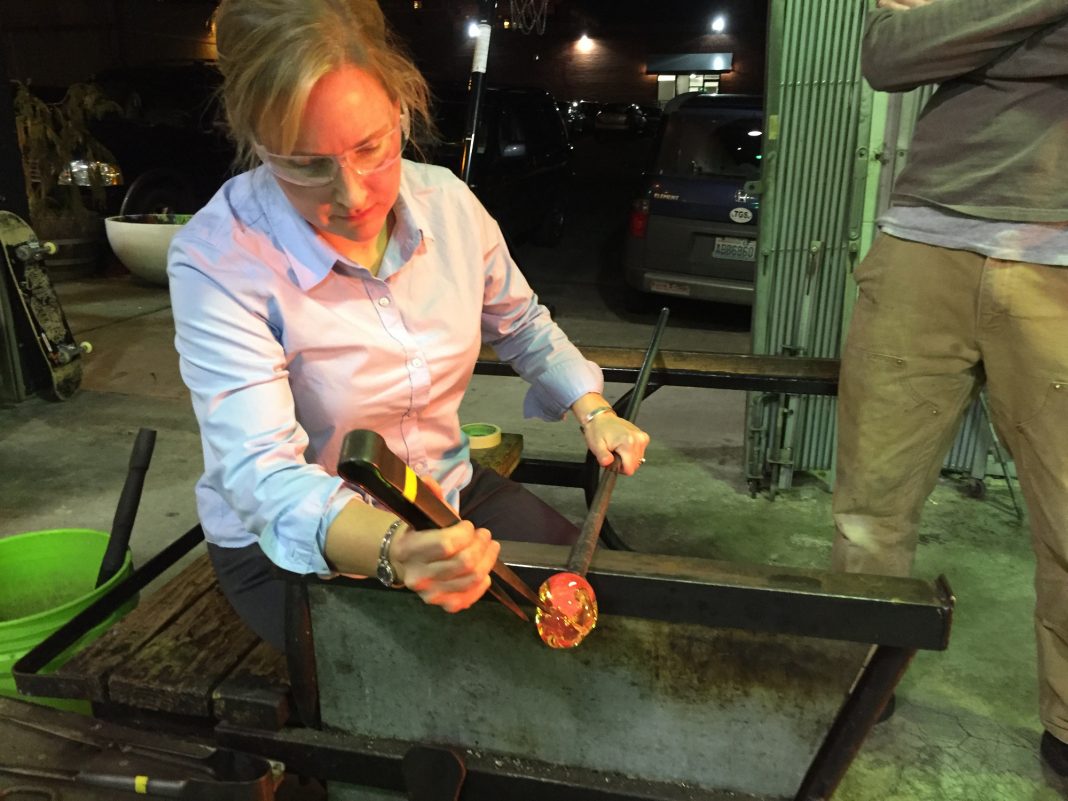Submitted by the Washington State Department of Corrections
Their inmate patients grapple with extensive effects of mental illness. Some come to sessions upset or angry and act aggressively. They may scream or cry. Some are so depressed they express self-harm thoughts.
Dr. Rain Carei regularly listens to their stories—often of untold violence, abuse and drug addiction. As a psychologist at the Washington Corrections Center for Women, she works to break destructive cycles in her patients’ lives and help them on the road to rehabilitation.
The stories she hears can leave her feeling drained. But she’s found a creative way to deal with the stress: glass blowing.
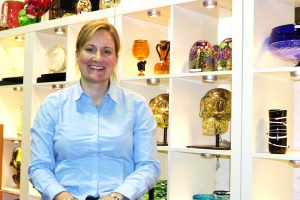
“It helps me cope with the emotion that I have to contain,” Carei said. “Clients are sharing stories that are really, really intense and that energy has to go somewhere and it usually goes into me. So being able to grab that and put it into a piece of art that I can take out and look at is really helpful.”
Carei began blowing glass three years ago, when she took a class as a birthday gift at the Tacoma Glassblowing Studio with her mother. Carei enjoyed it so much she continued the lessons and has made several glass pieces since.
Ideas for her art come from psychological concepts, or emotions she or her patients experience. She takes each abstract notion, writes or sketches about it in a journal and shows it to her instructor at the studio. She and the instructor brainstorm ways to turn her notes into a tangible piece of art.
Inspirations
Sometimes Carei’s art provides comfort in the face of tragedy. One of her pieces consists of a broken heart tangled in rope. Carei had two psychologist friends whose clients committed suicide within a span of a few weeks and that pain carried with her, inspiring artistic craft.
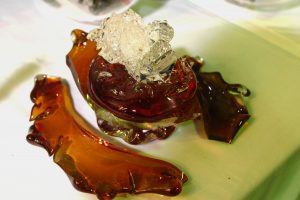
Suicide has been one of the leading causes of deaths in jails and prisons across the nation since 2000, according to the Bureau of Justice Statistics. Carei says counseling people who are thinking about ending their lives is an unfortunate but very real part of her job. The experience often leaves a feeling of heaviness, and Carei channels that feeling into her artwork.
“I was trying to get at what it’s like to be in that frame of mind and how to represent the hopelessness that people feel,” Carei said. “The heart is a representation of what I think it literally feels like to feel hopeless, that’s why it’s cut open. It’s like the air has come out of the heart, like there’s nothing left.”
She keeps the heart in a specific spot in her house and says displaying it is cathartic for her.
“Being able to put this somewhere that I can honor and respect it…I can look at it and understand that it hurts, but I can also leave it and that’s really powerful because otherwise I have to carry this around inside and that’s really hard to do.”
Other pieces of Carei’s work come from stories of hope.
Carei is perhaps most proud of a piece a patient inspired her to make. Like many of Carei’s patients, the woman had a long history of trauma and drug abuse and struggled with repeat incarceration. She got into fights. She had low self-esteem and did things to hurt herself. The only place the woman said she felt safe was behind prison walls.
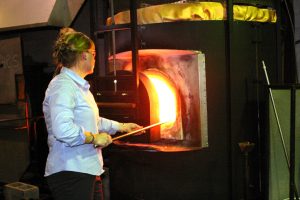
“Every time she would leave, she would hand me her stuff and say, ‘I’ll see you when I get back.’”
Carei worked with the patient over many months, discussing her trauma and ways she could change her lifestyle and outlook to stop the pattern of incarceration. More than two years have passed since Carei’s patient last left prison, and she hasn’t returned. Carei’s art tells the woman’s story. The piece contains several amber-colored slabs, and jagged fragments sharp enough to cut through flesh. It also has a black grain in the center.
“It represents that she’s falling apart. Repeated incarceration is taking a toll on her,” Carei said. “It represents all the stuff that’s bubbling out, and the top is all the stuff she is trying to unpack. And the piece in the center represents the core part of her that’s inside her but it’s difficult to find.”
Psychological Defenses
Carei’s latest series centers on concepts known as “psychological defenses.” Psychological defenses—31 in all—are unconscious mechanisms people use to protect themselves from anxiety.
One of her recent projects she worked on at the glass studio is “projection,” which consists of two green spheres. The sphere on the right has bumpy orange masses and the sphere on the left has long, snakelike strands oozing out of the top like lava. Between the spheres are some unshaped blobs. The sphere on the left is “projecting” emotion onto the other sphere.
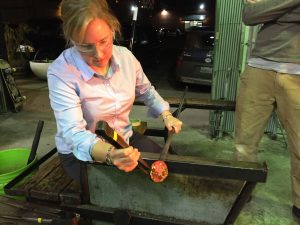
“That’s what happens when you project your emotions onto somebody,” Carei said. “Like when you’re really angry and you can’t handle it and you start pushing it onto somebody else. The problem is it creates a huge mess, and trying to untangle that mess is really hard.”
She’s planning on designing pieces to illustrate each defense and present them at a psychology conference this spring. She says creating representations of each defense helps her understand them better so she can understand her patients’ needs better. She hopes her work will have the same effect on peers who attend the conference.
“I love trying to understand something on the deepest level possible,” Carei said. “When you learn something in multiple modalities, it’ll make you stronger in whatever it is you’re understanding. I’m spending all my time listening to people and then when I come in here and make it tangible, I strengthen that ability even more.”

















